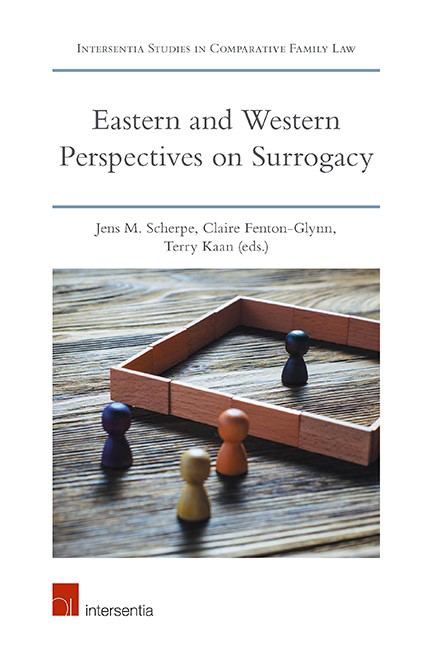Book contents
- Frontmatter
- Preface and Acknowledgements
- Contents
- List of Contributors
- Introduction
- Questionnaire
- PART I WESTERN PERSPECTIVES
- THE PROHIBITIVE APPROACH
- THE TOLERANT APPROACH
- THE REGULATORY APPROACH
- THE FREE MARKET APPROACH
- THE INFLUENCE OF INTERNATIONAL COURTS
- European Court of Human Rights
- PART II EASTERN PERSPECTIVES
- THE PROHIBITIVE APPROACH
- A TOLERANT APPROACH?
- REGULATION THROUGH PROFESSIONAL MEDICAL BODIES
- FROM FREE MARKET TO REGULATION
- PART III COMPARATIVE PERSPECTIVES ON SURROGACY
- Index
- About the Editors
European Court of Human Rights
from THE INFLUENCE OF INTERNATIONAL COURTS
Published online by Cambridge University Press: 26 June 2019
- Frontmatter
- Preface and Acknowledgements
- Contents
- List of Contributors
- Introduction
- Questionnaire
- PART I WESTERN PERSPECTIVES
- THE PROHIBITIVE APPROACH
- THE TOLERANT APPROACH
- THE REGULATORY APPROACH
- THE FREE MARKET APPROACH
- THE INFLUENCE OF INTERNATIONAL COURTS
- European Court of Human Rights
- PART II EASTERN PERSPECTIVES
- THE PROHIBITIVE APPROACH
- A TOLERANT APPROACH?
- REGULATION THROUGH PROFESSIONAL MEDICAL BODIES
- FROM FREE MARKET TO REGULATION
- PART III COMPARATIVE PERSPECTIVES ON SURROGACY
- Index
- About the Editors
Summary
INTRODUCTION
The issue of how cross-border surrogacy should be regulated has been a significant strand of the present authors’ research for several years. The Nuffield Foundation funded them from 2010 to 2012 to work on this topic and the main fruit of that labour was a substantial edited book that set out how surrogacy was being dealt with in many legal systems and presented the arguments for a new hard law solution of a Treaty regulating cross-border surrogacy arrangements along the lines of the highly successful Hague Convention on Intercountry Adoption. As a follow up to that work the present authors have systematically analysed the law on cross-border surrogacy from a comparative perspective in Europe and have recently analysed how the European Court of Human Rights (‘ECtHR’) has decided cases where a cross-border surrogacy arrangement was involved. The most recent work considered the case of Paradiso and Campanelli v Italy at the stage when the Chamber had taken its decision and the decision of the Grand Chamber was pending. In this contribution the authors intend to analyse the Grand Chamber decision in Paradiso and Campanelli and to consider the possible use of international soft law to help move states closer to achieving the consensus needed to regulate cross-border surrogacy arrangements in a Hague Convention.
FACTS OF PARADISO AND CAMPANELLI
In 2010, Ms Donatina Paradiso and Mr Giovanni Campanelli (‘the applicants’ or ‘the commissioning parents’), both Italian nationals and a married couple, entered into a surrogacy arrangement with a Moscow-based clinic called Rosjurconsulting whom they paid € 49,000 for their services. A surrogate was implanted with two embryos on 19 June 2010 and she gave birth to a child in Moscow on 27 February 2011. On the same day the surrogate gave her written consent to the child being registered as the applicants’ son.
- Type
- Chapter
- Information
- Eastern and Western Perspectives on Surrogacy , pp. 331 - 354Publisher: IntersentiaPrint publication year: 2019

